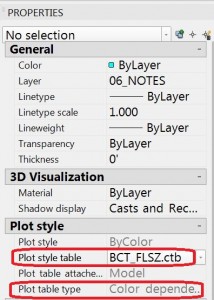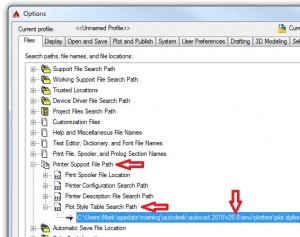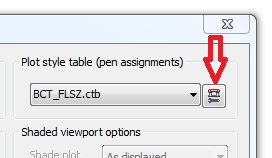C Autocad Draw Thin Line
As CAD artists, we all want our drawings to look professional and appealing to the eye. Well-managed line weights play a crucial role in making your AutoCAD drawings look professional and beautiful. Line weights can also improve a drawing's legibility.
Three ways to control line weights

A graphic design made from part of the line weights visualizer
AutoCAD offers three basic ways to control line weights:
- By color, using a color-dependent (CTB) plot style table
- By layer or by object, using a named (STB) plot style table
- By layer, using the settings in the Lineweight column of the Layer Properties Manager
In this post, I'll focus on the first two options, CTB and STB plot styles.
My personal preference is Number 1 above, the old-school method–controlling line weights by color, using a CTB file. Having worked in several leading architectural and interior design firms, CTB plot styles are the most commonly used option in my experience. I've also found it is the easiest method when sharing files between various offices. CTB plot style tables are also simpler to explain to your team than STB plot styles.
CTB vs. STB Plot Styles

Properties dialog for a color-based plot style drawing
Lots of spirited discussion has taken place about whether STB or CTB plot styles are better, simpler, or more efficient. Here is a link to an article giving a fairly balanced comparison of CTB and STB plot styles: CLICK TO SEE ARTICLE. In a nutshell,
- CTB styles are easier to use, but limit your options.
- STB styles are more flexible and powerful, but harder to explain.
Every AutoCAD drawing is initially created using a template that is set up for either CTB or STB plot style. It's not easy to change from one to the other after the drawing is started. For further information on converting a drawing's plot style between CTB and STB, take a look at the CONVERTPSTYLES and CONVERTCTB commands.
You can easily determine whether an existing DWG file is set up for CTB or STB plot styles by going into model space and opening the Properties dialog box (by typing Ctrl-1) with nothing selected. The type of plot style used is indicated in the Plot style section of the Properties box, as shown at left.
Most older design firms have established their office standards for controlling line weights.
Many newer AutoCAD users, and younger design firms, may be unsure how best to control line weights, and which line weights they should use. If that describes you, you're in the right place.
Download an easy, ready-made solution
If you're in doubt about line weights and would like an easy, ready-made solution, you're in luck! I've created an all-purpose, color-based (CTB) Plot Style Table file and I'm offering it to my readers as a free download. Here is the link to download the zip file:

You will find that the zip file contains two files:
[ezcol_1quarter]BCT_FLSZ.ctb
BCT Plot Style Table Visualizer.dwg[/ezcol_1quarter] [ezcol_3quarter_end] The color-based plot style table. BCT is short for Best CAD Tips; FLSZ is short for Fullsize (meaning printed at full size and not shrink-to-fit).
A DWG file which allows you to print out a clear, well-organized, lettersize page displaying the lineweights assigned to the AutoCAD colors. It is designed to be printed using either a color or black-and-white printer.[/ezcol_3quarter_end]

The Plot Style Table Visualizer
I've been using an earlier form of this visualizer for years, and it is the handiest tool ever. I recommend giving a paper-printed copy to everyone on your team, so that they get a visual sense of the line weights as they will actually print on paper. Since it's a DWG file, you can easily edit it to reflect your own office's standards. Or just adopt and use the settings I've provided in the downloads if you prefer.
The line weight choices set up in the downloadable CTB plot style table, and reflected in the Lineweights Visualizer, are based on my years of experience helping firms set up CAD standards. The philosophy behind it boils down to:
- Keep it simple.
- Use colors #1 through #7 for ascending thicknesses of black-printing lines, from 0.13 mm through 0.80 mm.
- Color #8 (medium gray) is set to a 50% screened black, providing a high-quality medium-gray line when using a non-color printer. Great for centerlines.
- Color #9 (light gray) is the thinnest black line of all. Use #9 sparingly, since it may not reproduce as well as the heavier line weights.
- Use the colors between #10 and #249 for true-color printing tasks, such as making solid-color hatches in colored presentation plans or colored elevations. You can still mix in black linework by using colors #1 through #7.
- Use the upper-number gray colors between #250 and #254 for a range of screened tones from 10% to 80%, which resemble the appearance of the on-screen colors. These work well for finer gradations of gray.
Installing the CTB file on your computer system

Options – Plot Style path
The CTB files used by AutoCAD are saved in a hidden folder inside the AutoCAD program. Its location (path) varies, depending on your computer setup. To add the BCT_FLSZ.ctb file to your AutoCAD Plot Styles folder, follow this procedure:
- After clicking the Download button above, go to your Downloads folder and find the downloaded file named LW_TBL_VISUALIZER.zip. Move the file to an easily findable location and unzip the compressed file. You should now see the two files listed above.
- In AutoCAD, go to the Options dialog box: With nothing selected, right-click in the work area and select Options… from the shortcut menu.
- In Options dialog box , make sure the Files tab is selected.
- Click on the plus (+) sign next to Printer Support File Path.
- Click on the plus (+) sign next to Plot Style Table Search Path. You should now see a long path name.
- Click once on the long path name next to the arrow. It should turn blue. See image at right. > > >
- Pause for a second or two, then click once more. You should now see a thin white box around the text of the path name. Type Ctrl-c to copy this path to the Windows clipboard.
- Click OK to close the Options dialog.
- Open Windows Explorer (not Internet Explorer). Click in the address box at the top.Type Ctrl-v to paste the path name address. Hit ENTER. You should now see the Plot Styles folder. Keep this folder open.
- Open another session of Windows Explorer (WindowsKey-e), and go to the BCT_FLSZ.ctb file that you downloaded earlier. Copy the BCT_FLSZ.ctb file to Windows clipboard (Ctrl-c).
- Return to the Plot Styles folder and paste the BCT_FLSZ.ctb file into the folder (Ctrl-v). Close the folder.
The BCT_FLSZ plot style table should now appear in your list of plot styles in AutoCAD.

You can easily edit the line weights by clicking on the Plot Style Table Editor button:

Hope this helps. Do you prefer using STB plot syles, and if so, why? Or a different system entirely? Let us know by leaving a comment below. Join our Best CAD TIps community, just CLICK HERE.
Have a great day, and Keep On CADDing!
Mark
(Visited 12,197 times, 1 visits today)
callendernere1937.blogspot.com
Source: https://bestcadtips.com/managing-autocad-line-weights/
0 Response to "C Autocad Draw Thin Line"
Post a Comment